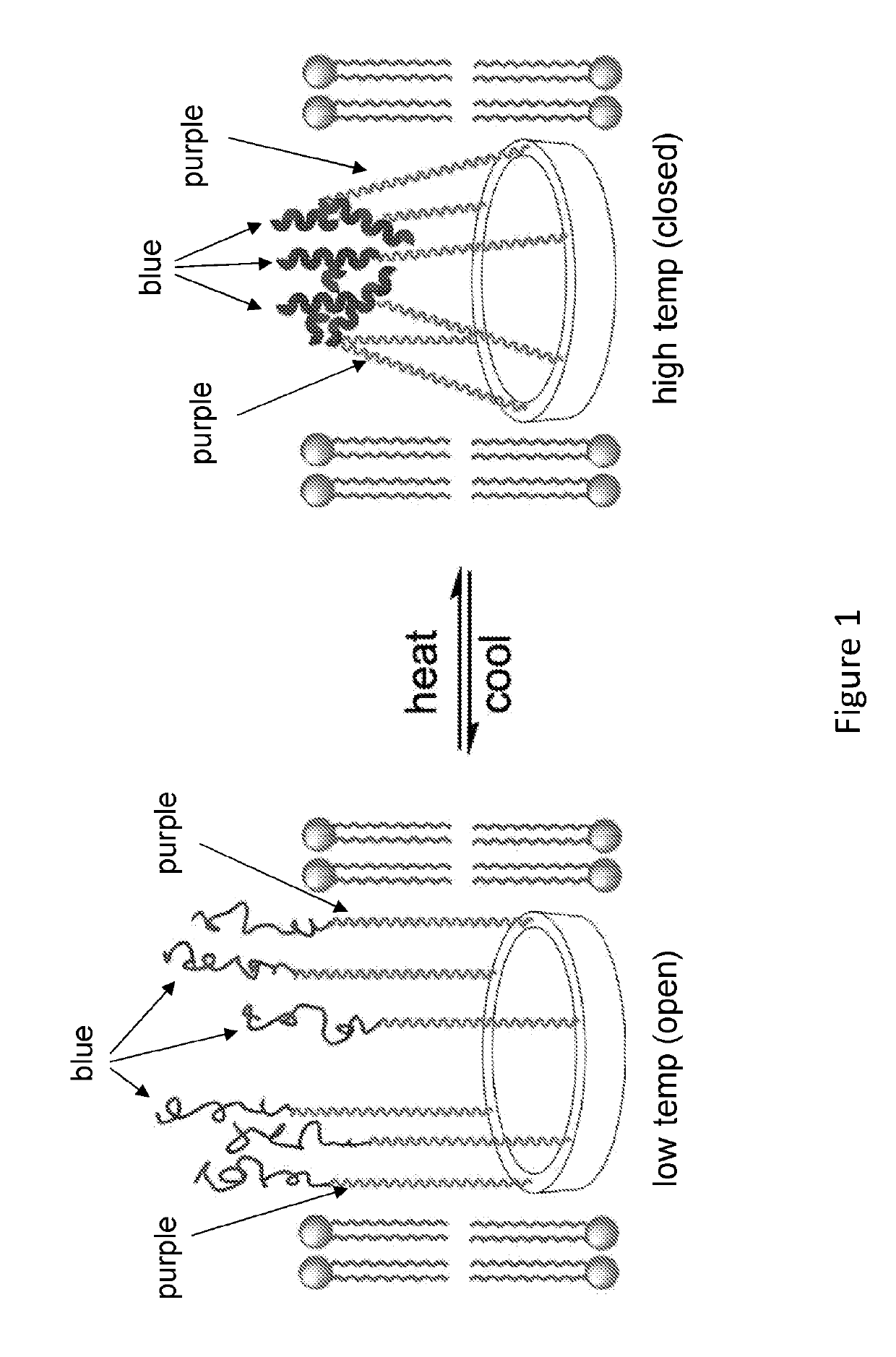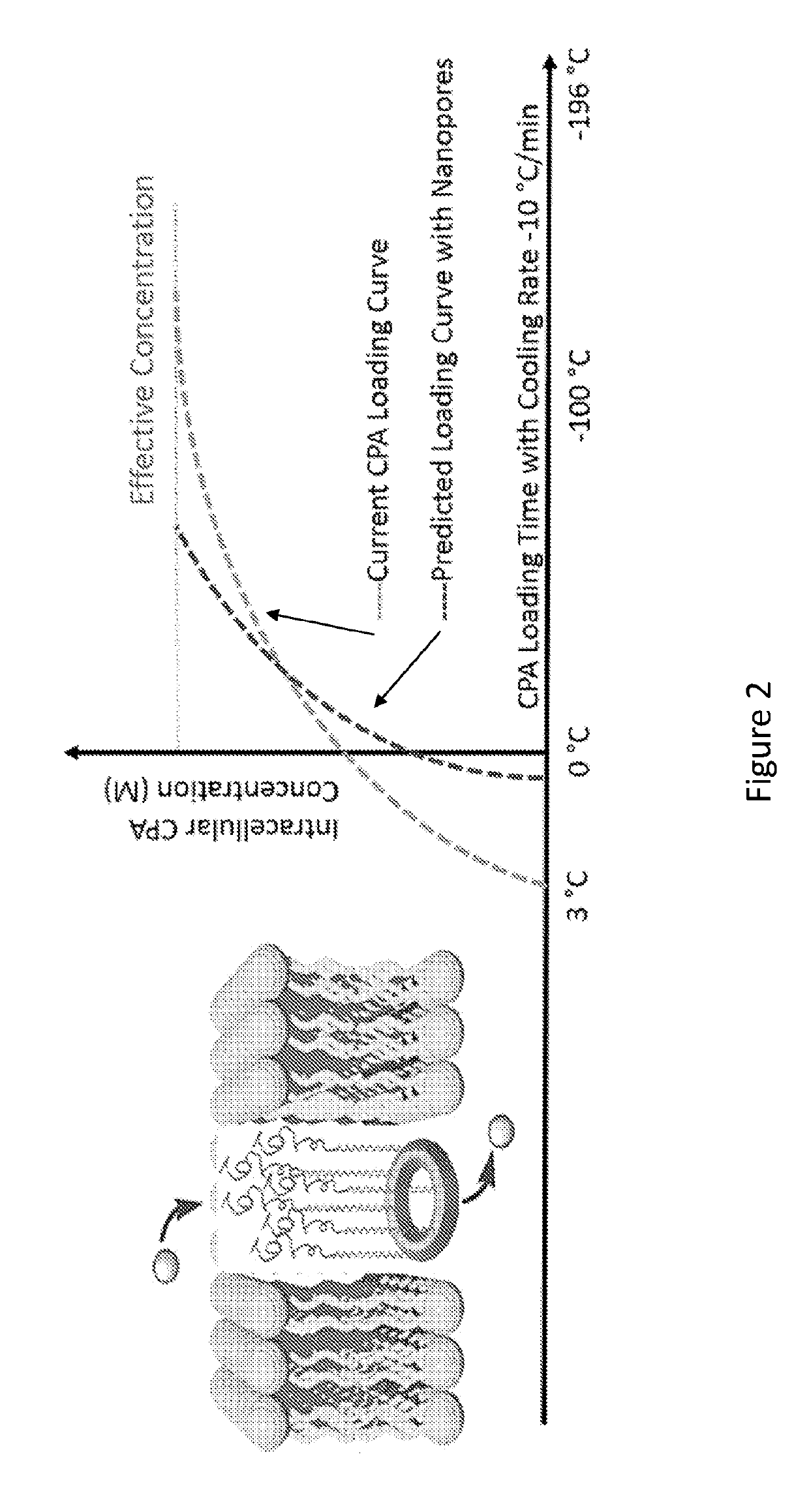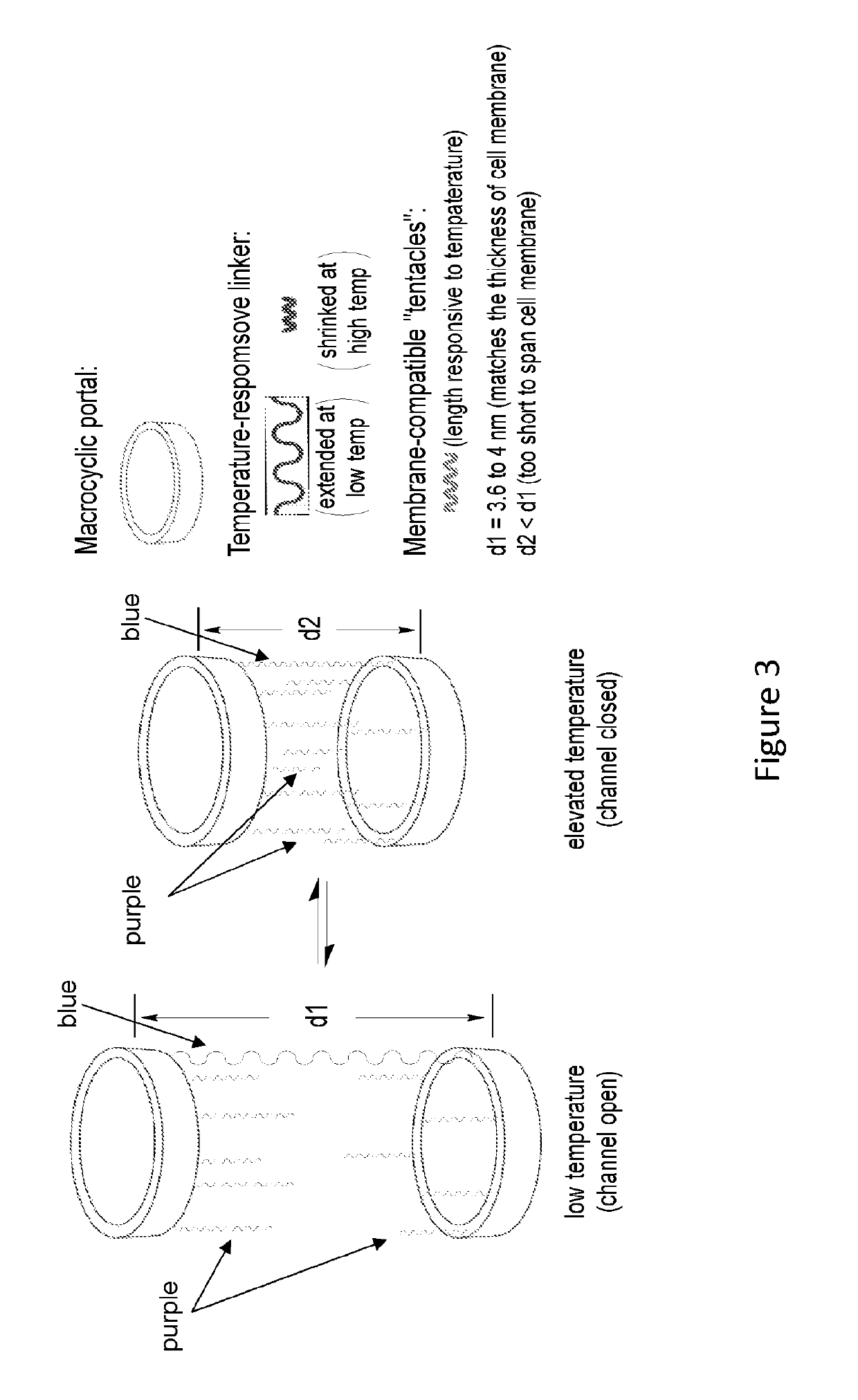Macrocyclic compounds and methods of making and using same
a technology of macrocyclic compounds and compounds, applied in the field of macrocyclic compounds, can solve the problems of large unexplored structural variability of membrane proteins, inaccessible to synthetic constructs, and inability to synthesize large functional pores with minimal help from biological approaches, and remains a significant challeng
- Summary
- Abstract
- Description
- Claims
- Application Information
AI Technical Summary
Benefits of technology
Problems solved by technology
Method used
Image
Examples
example 1
[0072]This example provides a description of a use of the macrocyclic compounds of the present disclosure in a cryopreservation method.
[0073]A design for cryopreservation involves, the preparation of bouquet-like molecular channel-formers (e.g., macrocyclic compounds of the present disclosure) that include a macrocyclic template to which multiple tentacles containing membrane spanning (purple) and temperature-responsive terminal (blue) segments are attached (FIG. 1).
[0074]Molecular simulation indicated that, for the passage of glucose through the cylindrical cavity of the tubular transmembrane an internal van der Waals pore diameter of >9 Å is required. Disaccharide passage requires a pore size of 13 Å respectively. Energy-minimization revealed that the macrocyclic template (FIG. 1) can consist of six basic units, each of which contains an α-amino acid and aromatic m-amino acid residue. Such a macrocycle has an overall rigid (non-deformable) shape with an inner cavity of ˜17 Å acros...
example 2
[0077]This example provides a description of macrocyclic compounds of the present disclosure and use thereof.
[0078]General design, shown in the FIG. 3, involves pore- or channel forming molecule consisting of two macrocyclic portals connected via a temperature-responsive linker (blue) to which multiple tentacles (purple) that are compatible to cell membranes spanning are attached. At a low temperature (e.g., 0-4° C.), the temperature responsive linker will be extended, with a length that allow the two portals to stay need the two surfaces of a lipid bilayer, leading to an opening channel. At an elevated temperature (e.g., 37° C.), the temperature-responsive linker will adopt a shrunk (compact) conformation, which shortens the distance between the two portals, leading to a closed channel. The tentacles will serve to form a channel with a pore size that is roughly defined by the macrocyclic portals.
[0079]Materials. Three macrocyclic portals (FIG. 4) consists of 6-8 basic units, each o...
example 3
[0086]This example provides a description of macrocyclic compounds of the present disclosure and use thereof.
[0087]The porating membranes of the present disclosure are important because of one or more of the following: (1) they are the first set of unimolecular pores with diameters comparable to those of protein pores but with much smaller masses, our system addresses a central challenge in the development of large synthetic pores; (2) the unimolecular nature, modest masses, and reversible switchability of our pores overcome many of the problems of known porating techniques, opening up new possibilities such as the controlled release or delivery of therapeutic or protective species encapsulated inside vesicles, for problems and challenges that are related to controlled membrane poration; or (4) the use of our pores requires no specialized equipment, no addition or removal of molecular or ionic species, and will be practically useful to large populations of cells. The porating membra...
PUM
| Property | Measurement | Unit |
|---|---|---|
| Amphiphilic | aaaaa | aaaaa |
Abstract
Description
Claims
Application Information
 Login to View More
Login to View More - R&D
- Intellectual Property
- Life Sciences
- Materials
- Tech Scout
- Unparalleled Data Quality
- Higher Quality Content
- 60% Fewer Hallucinations
Browse by: Latest US Patents, China's latest patents, Technical Efficacy Thesaurus, Application Domain, Technology Topic, Popular Technical Reports.
© 2025 PatSnap. All rights reserved.Legal|Privacy policy|Modern Slavery Act Transparency Statement|Sitemap|About US| Contact US: help@patsnap.com



